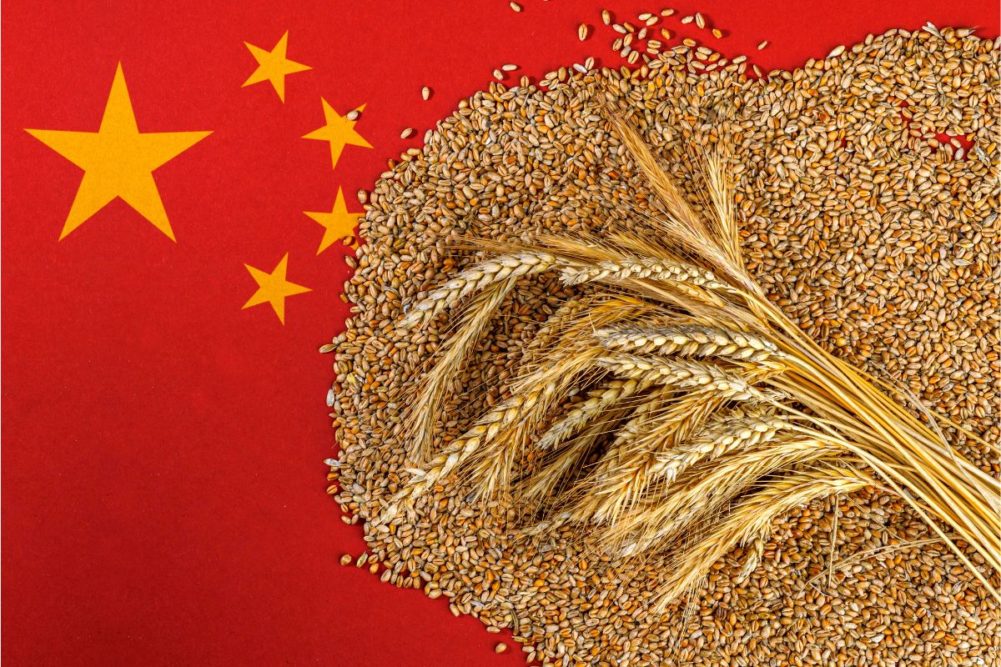China large-scale grain growers go sci-tech to guarantee food security

Xu Congxiang, a large-scale grain grower from Taihe County in east China’s Anhui Province, recently instructed his fellow farmers on how to prevent and treat wheat pests and diseases.
“Now wheat-related pests and diseases are still in the early period of development, so it is the right time to take preventive measures,” said Xu.
At the moment, spring farming, which is crucial to ensuring grain harvest, is in full swing across China.
As a keen learner and practitioner of agricultural science and technologies, Xu has repeatedly set Anhui’s yield records for wheat, corn and soybeans in his experimental fields.
The veteran farmer teamed up with research institutions to grow high-yielding crop varieties and test advanced planting methods on 20-hectare experimental fields out of more than 80 hectares of farmland he transferred from other villagers.
“Xu has rich farming experience. We need his help to test and verify our scientific study,” said Ding Yonggang, a researcher at Anhui Academy of Agricultural Sciences.
Last year, Xu and 54 other large-scale farmers in the city of Fuyang, Anhui, set up an association dedicated to applying modern agricultural technologies and helping small household farmers expand grain production and improve grain quality.
“I followed Xu’s way of sowing and applying fertilizers on my 0.8-hectare farmland. As it turned out, higher output was achieved with lower production cost,” said Zhang Bingyin from Zhanghuai Village, Taihe County.
This year, Anhui will focus on improving its agricultural sci-tech innovation capabilities and strengthening the ties between sci-tech and the industry, to accelerate the nurturing of new quality productive forces in agriculture, said Wang Xuejun, head of the provincial department of agriculture and rural affairs.
In recent years, led by farmers like Xu, the transfer process from laboratory research findings to new quality productive forces in agriculture has been accelerated, as reflected by increased production.
China’s grain output in 2023 rose 1.3 percent year on year to a record high of 695.41 million tonnes, official data showed. This is the ninth consecutive year that China registered a grain harvest of over 650 million tonnes.
According to this year’s government work report, further efforts will be made to ensure stable production and supply of grain and other major agricultural products, including invigorating the seed industry, making breakthroughs in key agricultural technologies, and addressing weaknesses in agricultural machinery and equipment.
Amid the urbanization process, more large-scale grain producers have been emerging in China. The increasing use of machinery has empowered them to manage more transferred farmland for scale operations.
“Modern agriculture has achieved full-process mechanization. This calls for the participation of more tech-savvy young farmers as they can master modern technologies very quickly,” said Dai Hong, 36, a large-scale grain producer in Gangzhongping Village in the city of Changde, central China’s Hunan Province.
“My father used to plow with cattle and small tools, which was rather a toiling and inefficient process. It is quite a different picture now,” he said.
Managing 32 hectares of paddy fields, Dai now deploys three transplanters, one rotary tiller, two reaping machines and a drone. He also follows updates on new agri-tech use in other countries on short video platforms.
With modern farming, Dai’s family earned a total income of more than 600,000 yuan (about 84,500 U.S. dollars) from his rice plantation last year.
As the largest contributor to grain production in Hunan for two decades, Changde has been promoting agricultural equipment upgrades through targeted government policies. Since 2016, local authorities have granted 600 million yuan of subsidies for the purchase of over 44,000 sets of machinery.
Nationwide, the mechanization rate in crop plowing, planting and harvesting had risen from 67.2 percent in 2017 to 73 percent in 2022. China aims to further increase the rate to 75 percent by 2025.
“I don’t regret going back to my hometown to become a farmer. My income now is six times more than what I earned as a migrant worker before,” said Dai. “Meanwhile now I can spend more time with my family. This is my ideal life.”
Read also
Ukraine is ready to help Syria prevent food crisis – Zelenskyy
Join with the EARLY RATE – 22 International Conference BLACK SEA GRAIN.EUROP...
Brazil sugar output decreased by 23% — Unica
Algeria imposes a complete ban on durum wheat imports in 2025
Weather in Brazil and Argentina remains favorable for the future harvest of soybea...
Write to us
Our manager will contact you soon



